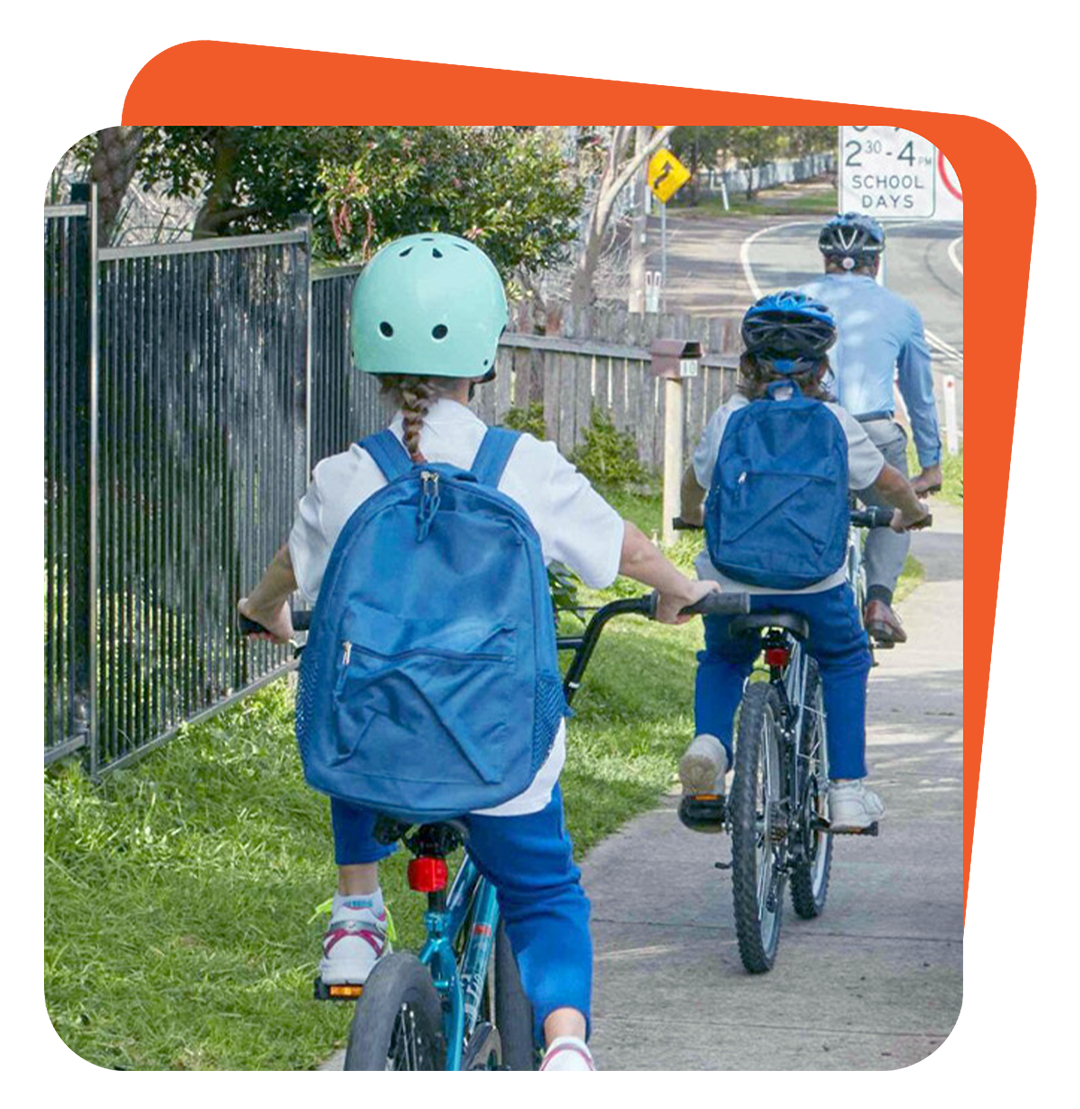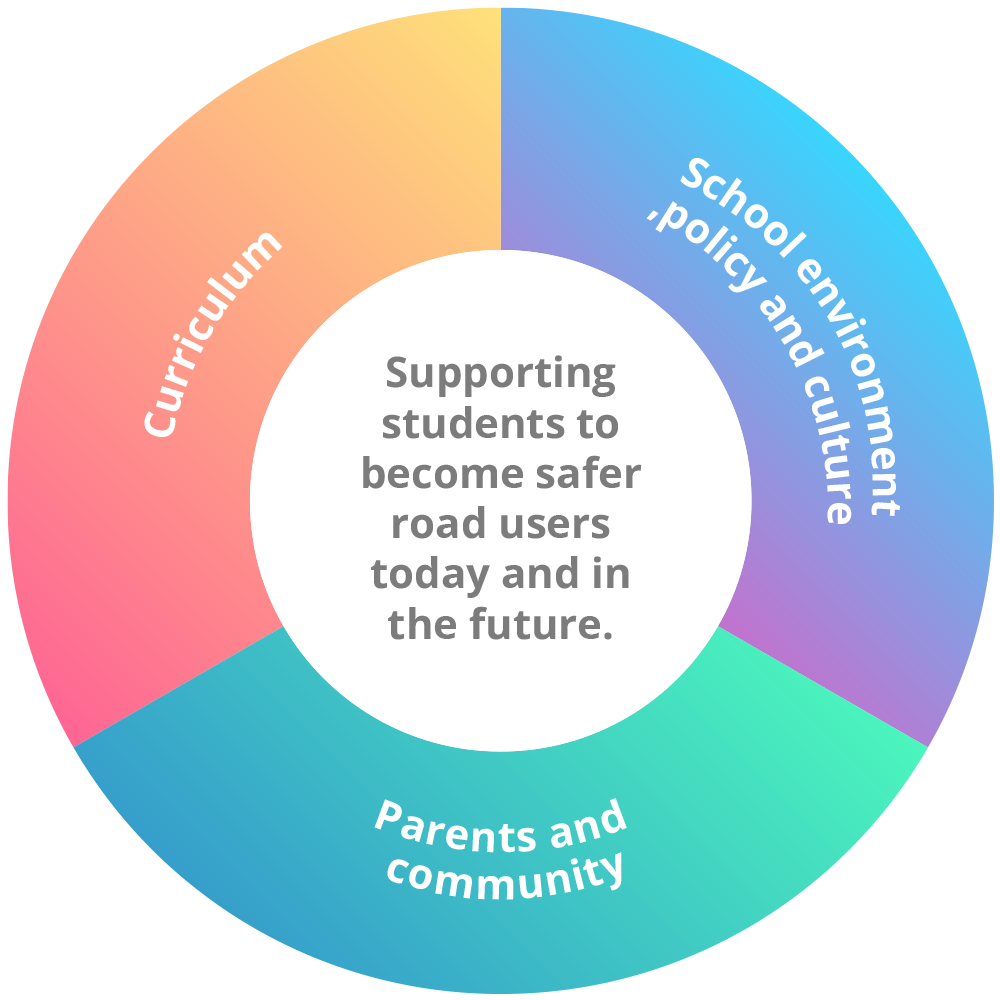Road Safety Events and Promotions
Road safety events and health promotions aim to inform, persuade, and motivate people to change attitudes and behaviours and improve road safety.

Engaging with road safety events and health promotions in primary and secondary schools brings numerous benefits by fostering a safer community and creating a culture of safety. These initiatives educate students on key safety messages, traffic rules and safe behaviours and actively involve parents and families, who are important educators in students’ lives.
WHO Health Promoting Schools Framework
The World Health Organization’s (WHO) Health Promoting Schools framework advocates for a holistic whole-school approach to health education and student wellbeing. By delivering road safety education through the PDHPE curriculum and integrating road safety-related community activities, the framework empowers schools to cultivate a culture of safety, reducing road user incidents and fostering responsible behaviours among students and their families
A whole-school approach to well-being should be in partnership with family, community resources, and local, state, and national initiatives (e.g., National Walk Safely to School Day). Whole-school community collaboration is fundamental in reinforcing and validating learning and providing consistent messages to students to establish individual and collective action and interactions that promote and strengthen healthy, safe, and active lives.
By applying a whole-school approach to road safety, schools are not just teaching a subject, but are actively engaging with road safety-related events and health promotions. This approach encourages family discussions and involvement in positive road safety practices, reinforcing learning at home and promoting collective responsibility. The result is a reduction in the risk of serious injuries and fatalities, ensuring a secure environment for students and the community, and cultivating lifelong habits of mindful and responsible road use.


